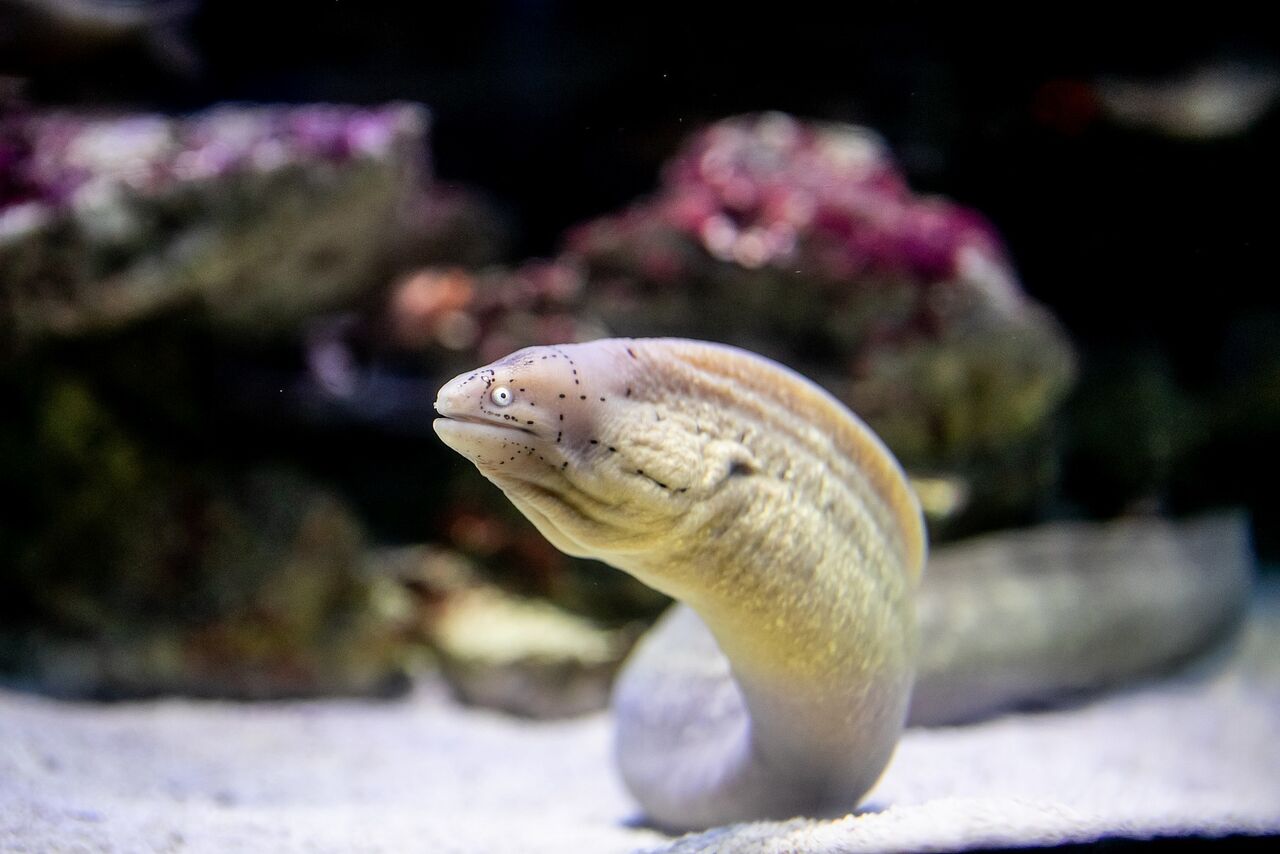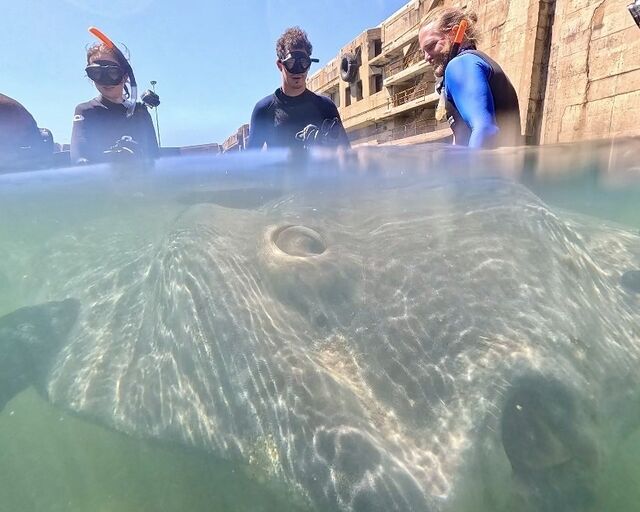The moray eel family (Muraenidae) is a big one, consisting of 15 genera and 200 different species. These snake-like fish are quite shy, and tend to dwell under ledges and in rock crevices. Moray eels possess a very good sense of smell, which combined with their second set of jaws situated in the throat, makes it easier for them to secure their prey. Despite not being generally aggressive, the bacteria in their teeth means that one bite from these beauties can quickly become infected. Now that you know a little bit about moray eels, let's meet the four different types of moray eels at the Two Oceans Aquarium!
First up, the floral moray eel
Floral moray eels live in the Red Sea, the Indo-West Pacific, and the Western Indian Ocean from Oman to East London. They prefer seagrass beds, rocky areas, and reefs in shallow water.
Their diet consists mainly of small fish and crustaceans (mainly crabs). If the eels come across prey that is too large, they will knot themselves around their prey to tear off small pieces to eat in smaller portions.
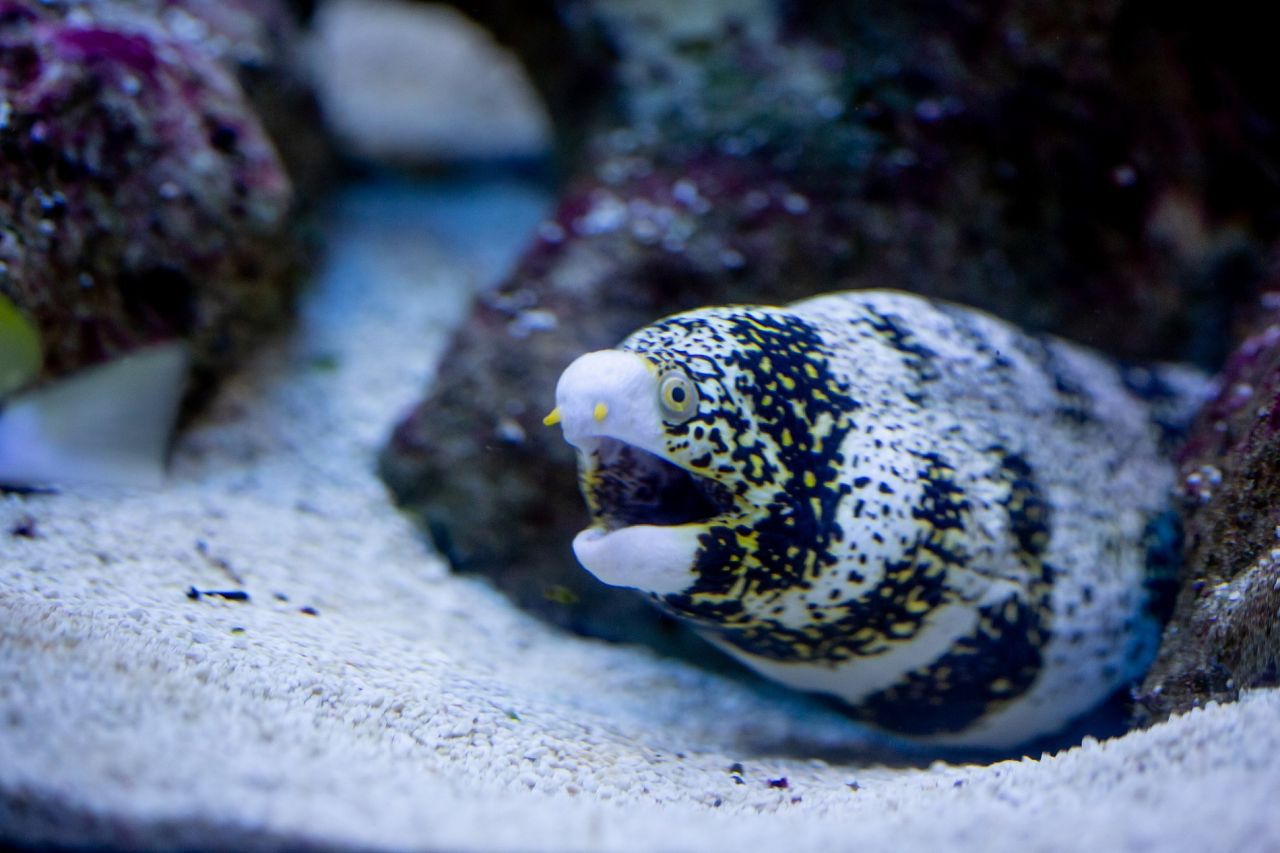
Next, the zebra moray eel
Zebra moray eels have been so named for obvious reasons - their black and white stripes. These eels can grow up to 90cm in length and have been recorded to have lived in human care for up to 20 years.
Zebra morays are reclusive and hunt mostly at night. Unlike many other eel species which have fang-like teeth, zebra moray eels have rounded teeth, which are specially adapted to crush the hard shells of their prey. Their menu usually consists of crabs and sea urchins.
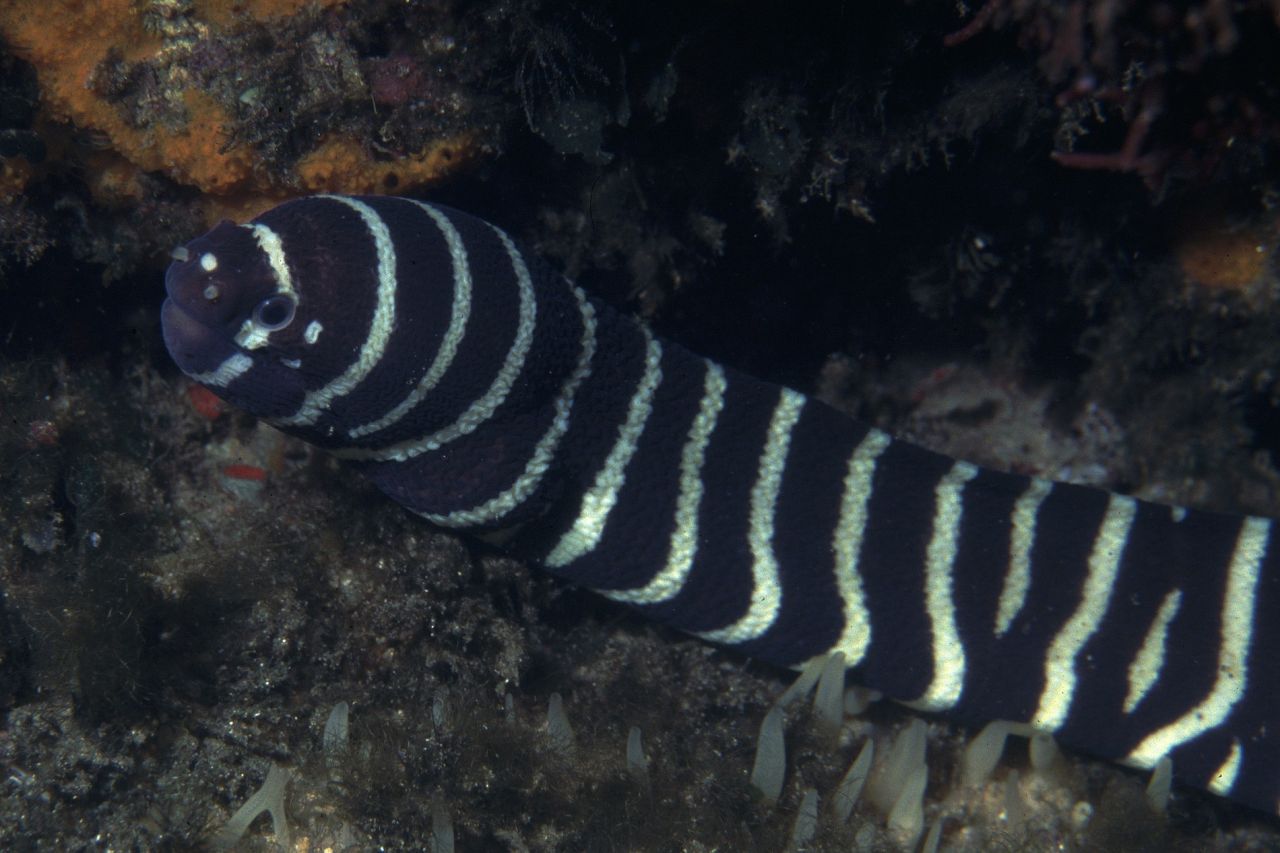
Swimming in next on our list, the geometric moray eel
The geometric moray eel is found on coral reefs in the Red Sea and the Western Indian Ocean south to the Eastern Cape.
These eels are "synchronous hermaphrodites", which means they produce both sperm and eggs simultaneously and can mate with any other geometric eel. Batches of 8 000 to 12 000 buoyant fertilised eggs are released at a time.
Geometric moray eels are nocturnal feeders and mainly eat small fish. They can grow to 65cm in length.
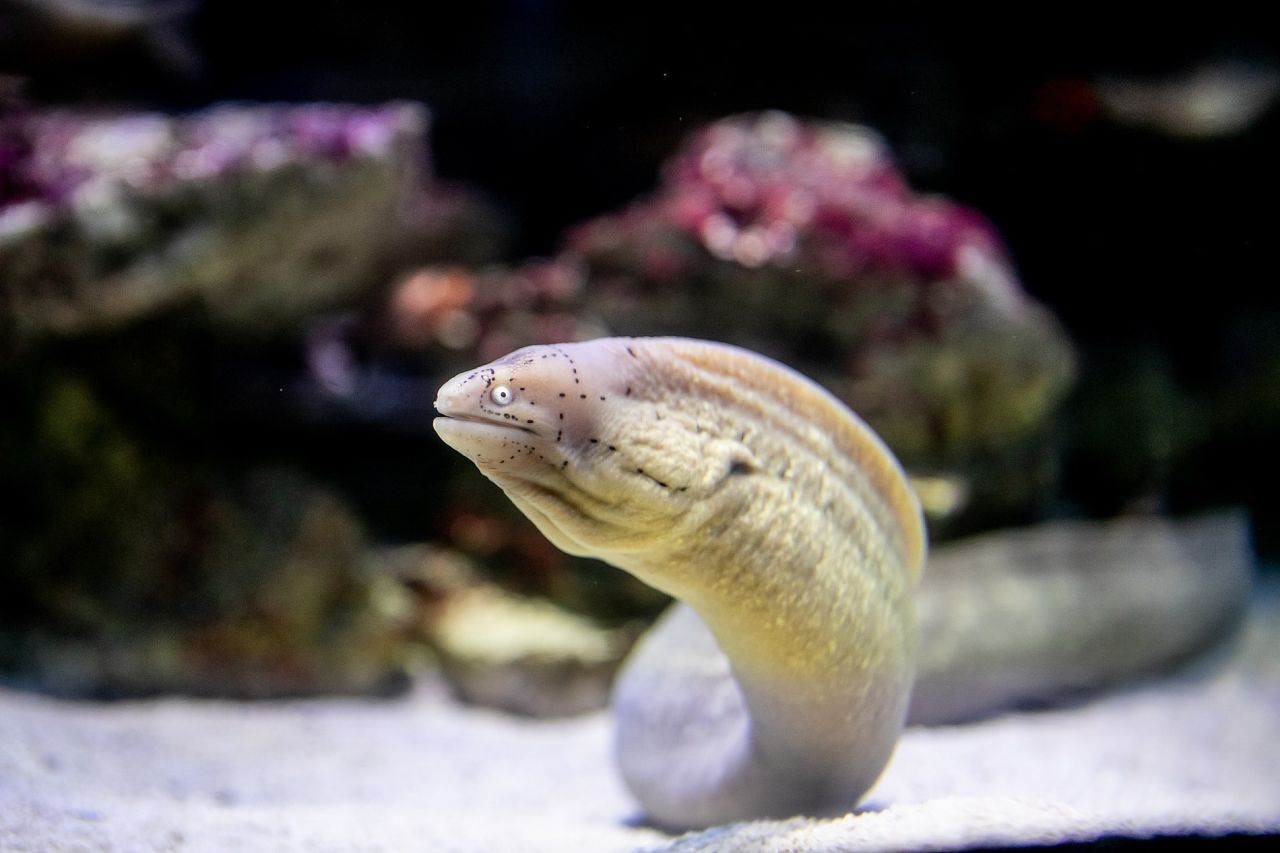
Last, but certainly not least on our list, we have the honeycomb moray eel
Honeycomb moray eels are widespread throughout the Indo-West Pacifica area. These eels have long, slender bodies and a white-yellow colour, with numerous black spots covering their entire body. These spots vary in size depending on the environment in which they live and the animal itself.
These eels are opportunistic hunters and feed at night. They feed mainly on small fish, molluscs, octopuses, and invertebrates. Honeycomb moray eels are often preyed upon by other moray eels.
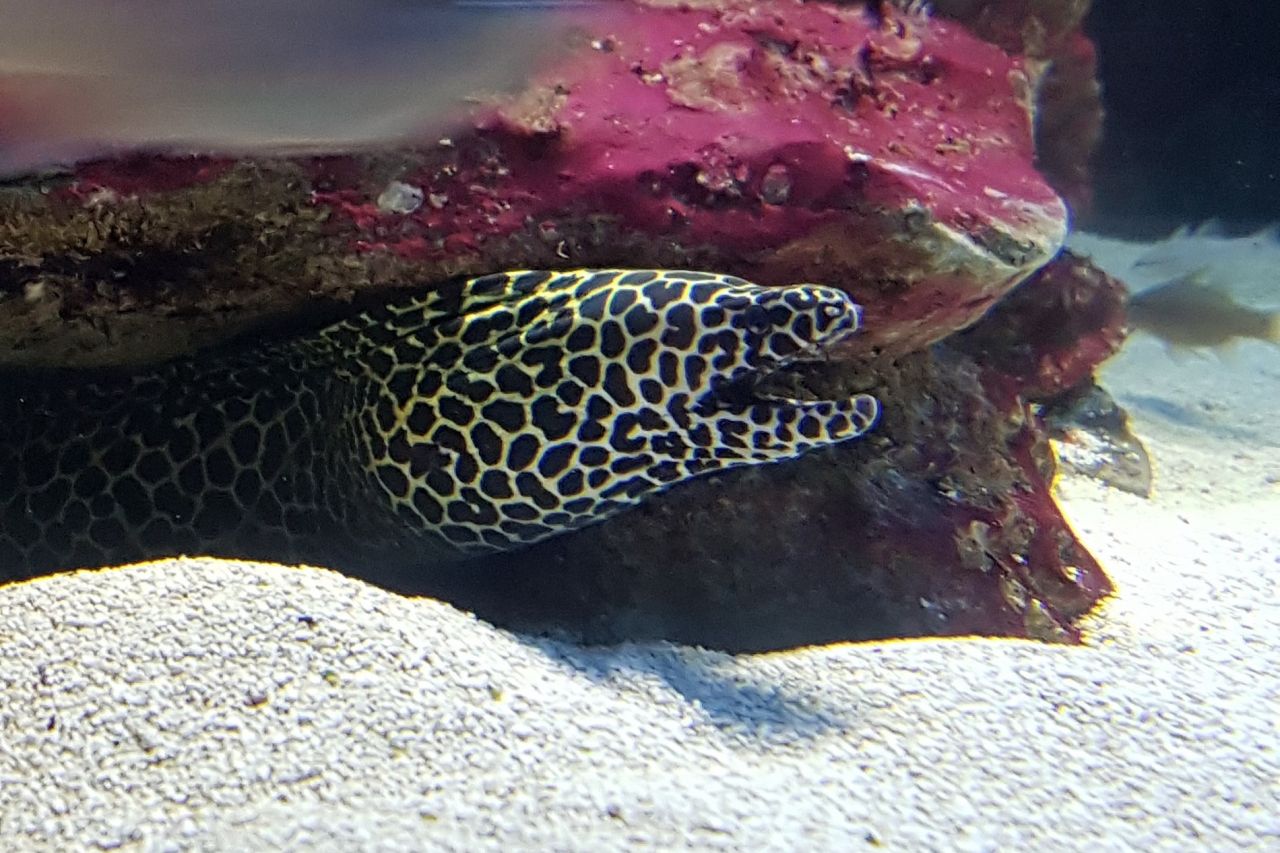
Did you know: Moray eels can sometimes be seen lying or drifting on their sides or sometimes even upside down. This isn't because they are ill, but rather becasue they lack the elongated low dorsal fins and no pectoral and pelvic fins which give other fish lateral stability.
